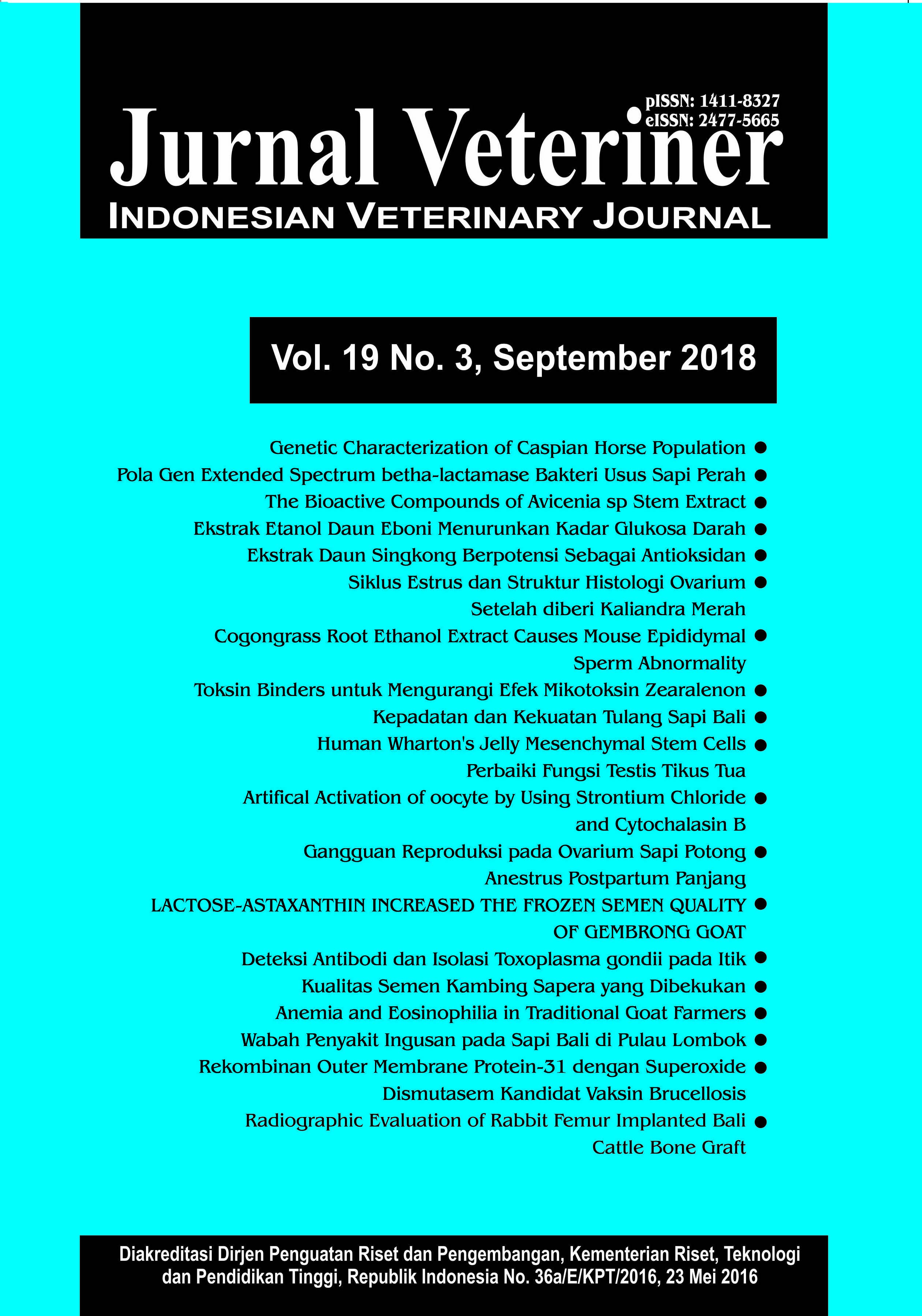Radiographic Evaluation of Rabbit Femur Implanted Bali Cattle Bone Graft
Abstract
Bone xenograft from cattle bone is commonly used to treat a comminuted fracture case. This study aims to know the process of fractured-femur bone healing in rabbit post-implantation powder bone graft from cortical femur bone of Bali cattle evaluated by radiographs. Ten male local rabbits were used in this study, which were divided into 2 groups randomly. Group I (KI) as control, the diaphysis of femur bone was drilled with a diameter of 5 mm without implanting the bone graft, while Group II (KII), the diaphysis of femur bone was drilled 2 holes with a diameter of 5 mm each and with distance 20 mm, substituted with mineralized powder bone graft for the proximal hole (KIIa) and demineralized powder bone graft for the distal hole (KIIb). Fracture healing evaluation was done at week 0 (24 hours), 2, 4, and 6 postoperative by monitoring the growth of callus, fracture line, and union process with radiograph based classification according to Hammer et al., tabulated statistically, and presented descriptively. The results showed that KI and KII were in the sequel of fracture healing but had not reached remodeling phase perfectly. In conclusion, mineralized and demineralized powder bone graft used in this study was as osteoconductive and the use of bone graft shows no different significance and time shows different significance to fracture healing.



















